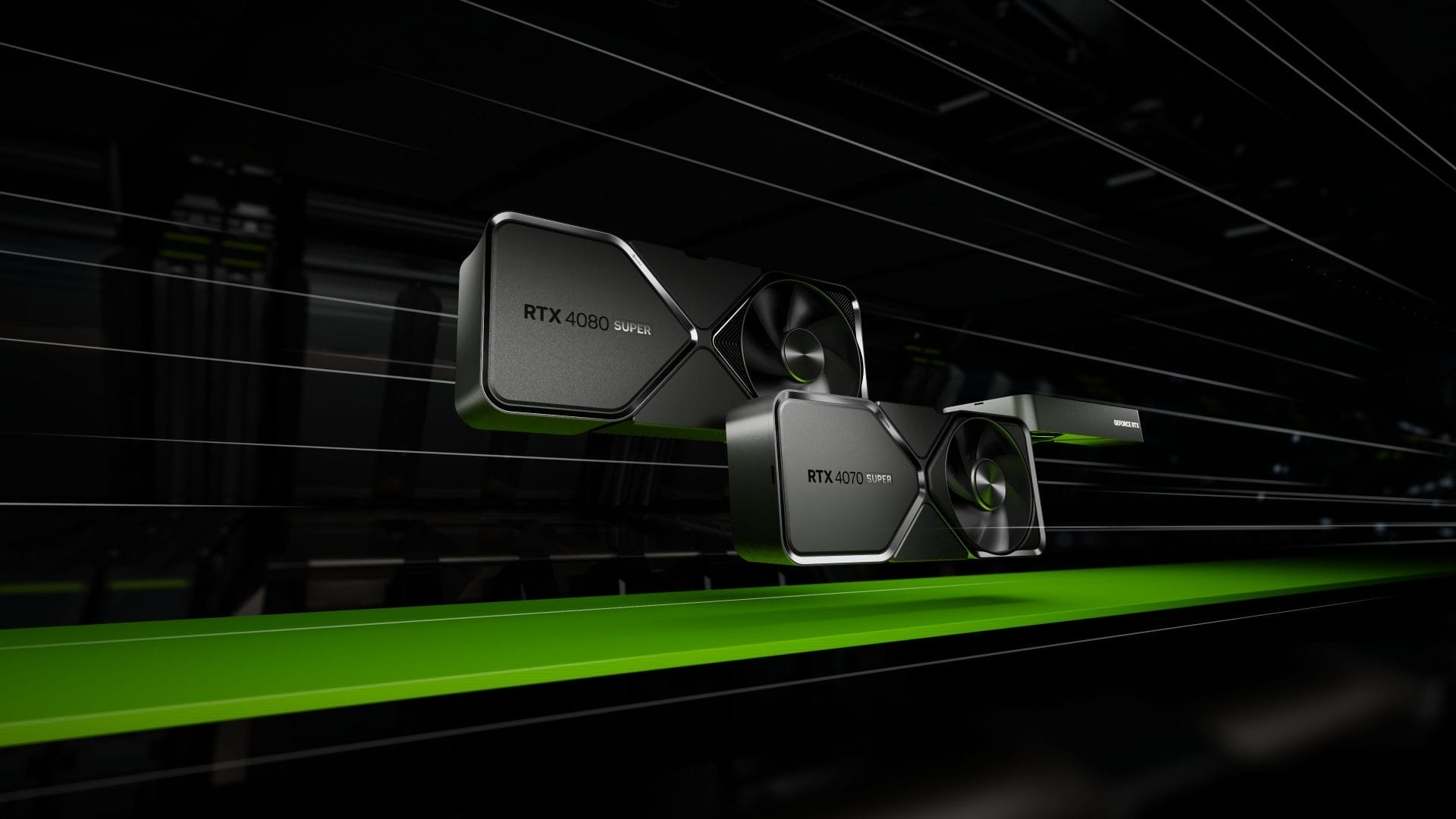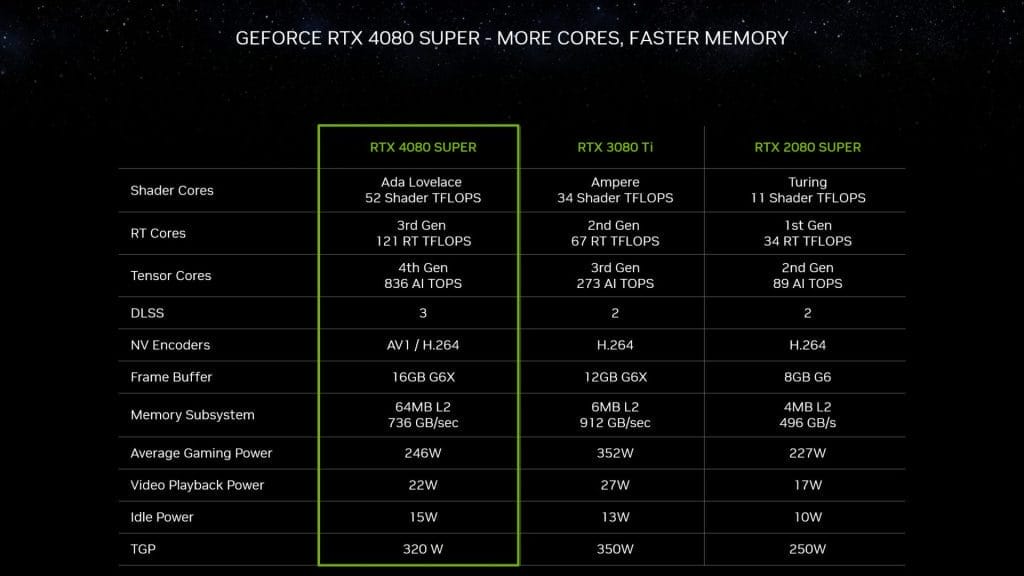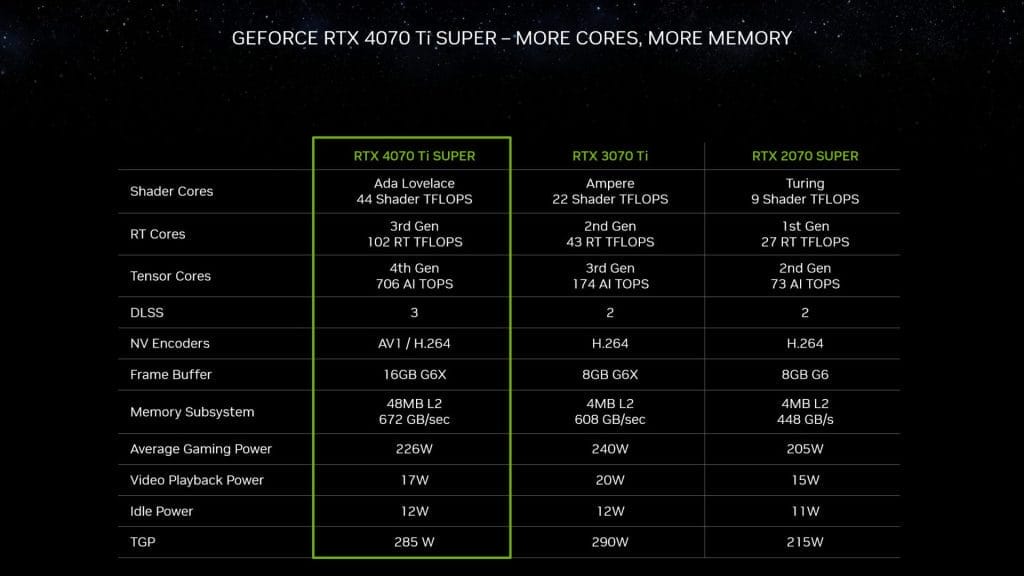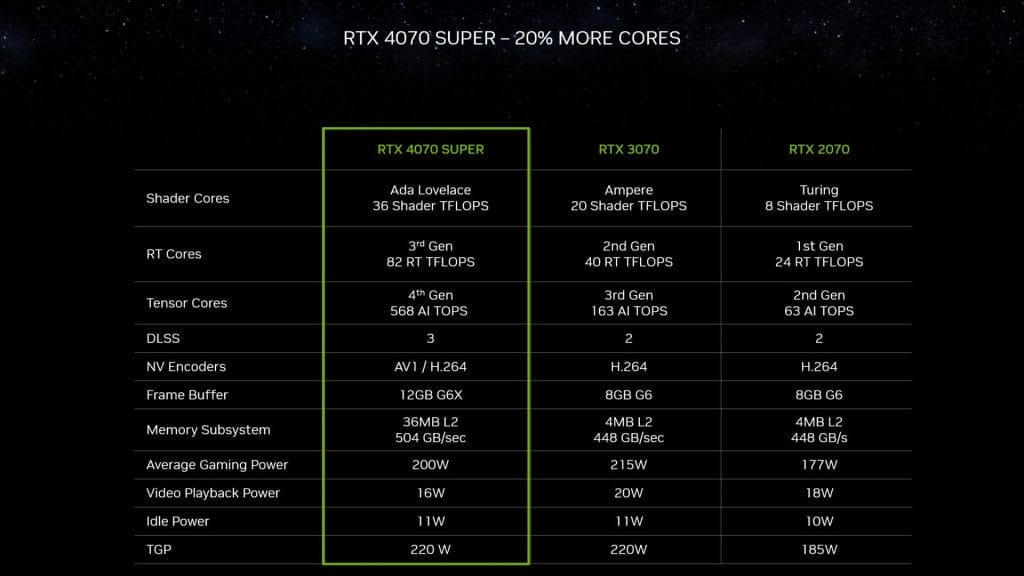Nvidia Shakes Up the Tech World: Introducing the RTX 40 Super Series Starting at $599 – See What's Being Discontinued

The technology sector often merges anticipation for future releases with the natural progression of discontinuing older versions. Nvidia’s latest launch serves as a perfect example of this occurrence.
You’ve likely heard the buzz about the RTX 40 Super Series, starting at an attractive $599; this lineup is poised to redefine the landscape of high-performance GPUs.
As you ponder the implications of acquiring a cutting-edge RTX 4080 Super, RTX 4070 Ti Super, or RTX 4070 Super, it’s worth considering what their introduction means for existing models that are being phased out.
Nvidia’s strategic move to discontinue certain cards is as critical to the market as the introduction of new ones. With the RTX 4070 Super slated to hit shelves on January 17th, you’re standing at a crossroads where the future of computing power meets the end of an era for some products.
Stick around to grasp the full scope of this shake-up and how it might influence your next tech investment.
Unveiling the RTX 40 Super Series
Nvidia has officially lifted the veil on its RTX 40 Super Series, introducing a trio of enhanced GPUs poised to redefine gaming and AI application performance. You’ve got the RTX 4080 Super, 4070 Ti Super, and 4070 Super, each with their own set of GPU specifications that promise significant boosts in performance comparison to their predecessors.
The RTX 4080 Super, with its full AD103 chip, now boasts more CUDA cores and a memory bandwidth of 736GB/s. Targeting owners of previous RTX models, its performance uptick sits at a modest 1-5% over the RTX 4080.
Meanwhile, the 4070 Ti Super, with its improved core count and 16GB of G6X memory, is expected to deliver around a 10% performance increase over the original RTX 4070 Ti.
Pricing details are competitive, with the RTX 4070 Super tagged at $599, available on January 17th, offering a 15% performance boost compared to the RTX 4070. The 4070 Ti Super will hit shelves at $799 on January 24th, while the 4080 Super will follow on January 31st starting at $999.
These availability dates and aggressive pricing are set to make a noticeable impact on the market, challenging both AMD’s Radeon line and Nvidia’s previous non-Super models.
RTX 4080 Super Breakdown
Building on the anticipated performance enhancements of the RTX 40 Super Series, the RTX 4080 Super stands out with its full AD103 chip, delivering more CUDA cores and a significant boost in memory bandwidth. You’ll find the RTX 4080 Super specifications include a hearty 16GB of G6X memory complemented by a memory bandwidth of 736GB/s, ensuring smooth texture loading and shading at high resolutions.
When it comes to RTX 4080 Super performance, expect top-tier gaming experiences. The GPU can draw up to 320 watts of power, indicating its high-performance pedigree. Yet, it’s the intricate balance of power draw with the efficiency of the architecture that makes it stand out. You’ll see minimal performance overheads even when pushing your games to their graphical limits.
The RTX 4080 Super target audience is clear: it’s aimed at serious gamers and creative professionals looking for a significant upgrade. If you’re rocking an older RTX 3080 Ti or RTX 2080 Super, this GPU is tailored for you. It’s not just about raw power; the improved memory bandwidth complements the advanced processor to deliver a refined and compelling upgrade.

Exploring RTX 4070 Ti Super
Diving into the RTX 4070 Ti Super, you’ll notice it packs a punch with its enhanced CUDA core count, positioned to deliver around a 10 percent performance uplift from its predecessor. With a memory upgrade to 16GB of G6X, the RTX 4070 Ti Super steps up as a formidable player in the high-end GPU market.
In terms of performance comparison, the significant bump in CUDA cores and memory bandwidth situates the 4070 Ti Super comfortably above the original 4070 Ti. You’re looking at a card that not only handles demanding games with ease but also offers robust DLSS support, ensuring that your frame rates stay high without compromising on quality.
Pricing and availability are just as competitive. Set at $799, the RTX 4070 Ti Super hits the shelves with a promise of value and performance, particularly when pitted against its in-house siblings and AMD’s offerings.
Nvidia’s CES 2024 announcements further underlined the card’s capabilities, showcasing upcoming games and applications that leverage the power of the new RTX 40 Super series. As you consider your next upgrade, the RTX 4070 Ti Super presents itself as a tempting proposition, blending next-gen features with a price tag that’s hard to ignore.

RTX 4070 Super Features
With an upgraded core count and 12GB of G6X memory, the RTX 4070 Super stands out as a powerful contender for gamers looking to surpass the performance of an RTX 3090 without a hefty power draw. You’ll appreciate the RTX 4070 Super performance, which rides on a significant increase in CUDA cores, boosting its capability to handle demanding titles at high resolutions.
Analyzing the RTX 4070 Super pricing, you’re getting robust performance starting at $599. This is a strategic move by Nvidia, positioning the card as a value proposition in the high-end segment. The RTX 4070 Super availability is set for January 17th, ensuring you don’t have to wait long to upgrade your gaming setup.
The RTX 4070 Super memory upgrade maintains the balance between capacity and bandwidth, catering to the latest gaming and creative workloads. Its power consumption is another highlight, with the card sipping up to 220 watts, which means you can expect efficient performance per watt. This is significant, especially if you’re mindful of your energy bill or have a power supply that can’t cater to more voracious GPUs.

Founders Edition and Alternatives
When choosing an RTX 40 Super Series GPU, you’ll find both Founders Edition cards and a variety of third-party alternatives to consider. The Founders Edition typically offers a baseline for design and performance, directly from Nvidia. However, third-party options from brands like ASUS, MSI, and Gigabyte often come with their own tweaks, such as improved cooling solutions or factory overclocks.
Analyzing the landscape, you might want to weigh these factors:
- Pricing and Availability: Founders Edition GPUs tend to have set prices, while third-party models can vary depending on features.
- Design and Aesthetics: Some prefer the sleek design of the Founders Edition, while others opt for the customization offered by third-party alternatives.
- Performance Enhancements: Third-party cards sometimes offer better performance gains, especially when considering DLSS and overclocking potential.
- Comparison with AMD: While Nvidia’s RTX 40 Super Series is making waves, consider how AMD’s offerings might stack up in terms of price-to-performance.
Competing With AMD Radeon
While considering the design and performance enhancements of Nvidia’s RTX 40 Super Series, it’s crucial to examine how they stack up against AMD Radeon’s latest GPUs in the quest for market dominance. In the Nvidia vs AMD showdown, pricing comparison plays a pivotal role. Nvidia’s strategic pricing positions the RTX 4070 Super starting at $599, undercutting comparable AMD offerings. You’re observing a tug-of-war where value proposition becomes the decisive factor.
Delve into performance benchmarks, and you’ll see Nvidia’s lineup promises impressive gains. The RTX 4080 Super aims to double the prowess of the previous RTX 3080 Ti, setting a high bar for AMD’s Radeon RX 7900 series. But it’s more than just raw power; Nvidia targets a specific audience, focusing on existing RTX 3080 Ti or RTX 2080 Super owners for upgrades.
Analyzing the value proposition, the RTX 40 Super Series not only competes on performance but also on the cost-to-benefit ratio. Nvidia presents a compelling case to gamers and professionals alike, asserting that superior performance doesn’t have to break the bank. Ultimately, your choice hinges on which brand fulfills your gaming or creative needs while offering the best bang for your buck.
Nvidia’s AI Integration Strategy
Nvidia’s strategy to integrate AI into their RTX 40 Super series GPUs positions them as frontrunners in the race to dominate the emerging AI PC market. This move isn’t just about raw power; it’s about enhancing your machine’s ability to learn, adapt, and optimize performance through AI integration.
As you consider upgrading your rig, think about the doors Nvidia’s AI advancements could open for you:
- AI PCs: By leveraging the RTX 40 Super series, you’re not just buying a GPU; you’re investing in an AI PC future where capabilities like real-time ray tracing and AI-driven applications become the standard.
- DLSS Performance Gains: Expect significant boosts in frame rates and image quality thanks to DLSS technology, which uses AI to upscale graphics without taxing your system.
- Copilot AI Assistant: With Microsoft’s dedication to AI PCs, anticipate seamless integration with features like the Copilot AI assistant, enhancing your productivity and gaming experiences.
- Microsoft’s AI Commitment: The collaboration between Nvidia and Microsoft ensures that AI integration isn’t an afterthought but a foundational element of your computing environment.
Nvidia isn’t just selling you a component; they’re offering a transformative AI experience that will redefine what you expect from your PC.
Discontinued Models and Market Impact
The discontinuation of previous RTX models ushers in a new era for Nvidia’s product lineup, impacting market dynamics and consumer choices. As you navigate this shift, it’s crucial to understand NVIDIA’s strategy behind these changes.
By phasing out older models in favor of the RTX 40 Super series, Nvidia streamlines its offerings, potentially simplifying your decision-making process when upgrading your hardware.
Analyzing the discontinued models reveals that Nvidia is prioritizing performance leaps and efficiency gains. This move shakes up market competition, as the Super series encroaches on price points previously held by less powerful GPUs, including some from rival AMD. For you, the impact on consumers is two-fold: you’re getting more bang for your buck, and you’re likely to see accelerated innovation as competitors respond to Nvidia’s aggressive positioning.
However, the pricing implications of the Super series introduction aren’t to be overlooked. Higher-tier models being discontinued means that while you might miss out on certain price tiers, the value per dollar spent on Nvidia’s new lineup could be significantly higher. This strategic phasing out, paired with the competitive pricing, is poised to influence your purchasing decisions and the broader GPU market for the foreseeable future.
Final Thoughts
You’ve witnessed the dawn of Nvidia’s RTX 40 Super Series, a game-changer starting at $599. As the RTX 4070 Super hits the shelves, its siblings aren’t far behind, promising groundbreaking graphics and AI prowess.
Nvidia’s strategic discontinuation of older models paves the way for these newcomers, setting a new standard in both performance and price. With AMD in their sights, Nvidia’s latest offerings aren’t just shaking the market—they’re reshaping the future of gaming and creation.

